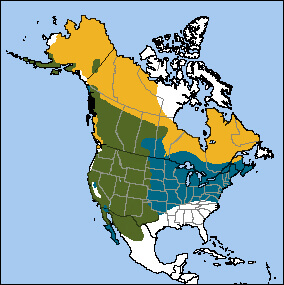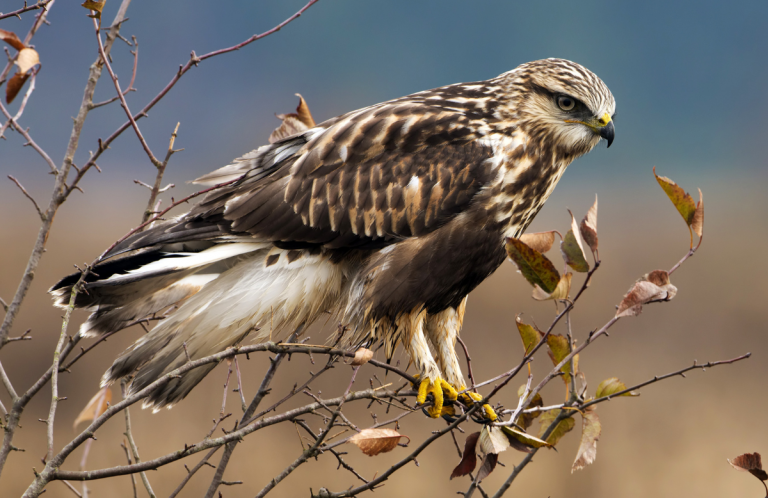
Golden Eagle range in North America. Map by NatureServe.
Reflecting the reverence many have for this raptor, the Golden Eagle is the national symbol for five countries: Albania, Germany, Austria, Mexico, and Kazakhstan.
This eagle favors open country and uses a variety of habitats, ranging from arctic to desert. It's found mostly in the western half of the U.S.; the eastern U.S. population is thought to be distinct. This eastern population is also uniquely threatened and numbers no more than 2,000 individuals.
The Golden Eagle is one of the most impressive raptors in North America, as its huge beak and talons suggest. But this hasn't stopped the species from coming under threat. The Bald and Golden Eagle Protection Act of 1962 made it a federal crime to kill an eagle, but other threats to the birds are increasing.
Turbine Threat to Eagles
Although the Golden Eagle is widely distributed over Europe, Asia, and North America, it is declining in many areas, especially in places where human populations are growing and creating opportunities for the birds to collide with manmade objects. One of the biggest threats comes from the ever-growing gauntlet of wind turbines being built in areas that are critically important for Golden and Bald Eagles and other birds.
As our 2016 report, "10 of the Worst-sited Wind Energy Projects for Birds" noted, the nearly 5,000 turbines operated by four different developers in the Altamont Wind Resource Area in California have killed more than 2,000 Golden Eagles since 1998 (the date when the facilities started keeping track of bird mortality).
Of all of these, the poorly sited Summit Repowering Project (formerly the Altamont Winds wind energy project) has long been one of the worst killers of eagles and other raptors.
30-Year Pass to Kill Eagles
In a bid to support the production of renewable energy, in 2009, the federal government established rules granting the wind energy industry and other sectors permission to kill eagles under limited circumstances for up to five years. In a 2013 decision that may further increase eagle mortality, this rule was changed to allow wind energy companies to obtain 30-year permits to kill eagles without prosecution.
Concerned about the impact of this rule on eagle populations, in 2014 we filed suit about the 30-year eagle permit rule as part of ongoing advocacy for Bird-Smart Bird-Smart Wind Energy. We support the responsible development of renewable energy, but urge the industry to conduct assessments before placing turbines in places where Golden Eagles and other protected birds will likely be impacted. We were thrilled to be able to declare victory in this case in 2015.

Golden Eagle by Michael Ninger, Shutterstock
Lead Ammunition and Birds
Lead poisoning is another major threat to the Golden Eagle; like the California Condor, it hunts and scavenges in areas where lead is often left in the environment by hunters. Without intensive, emergency treatment, birds that ingest lead face extreme sickness or death. Because of its impact on eagles, condors, and other declining bird species, we continue to encourage hunters to use only non-lead shot.
Get Involved
We welcome every effort to help us "bring back the birds." If you would like to make a donation, please click here. Or visit our Get Involved page to learn more about how you can help. Together, we can make a difference for this and other birds.
Donate to support ABC's conservation mission!



















































